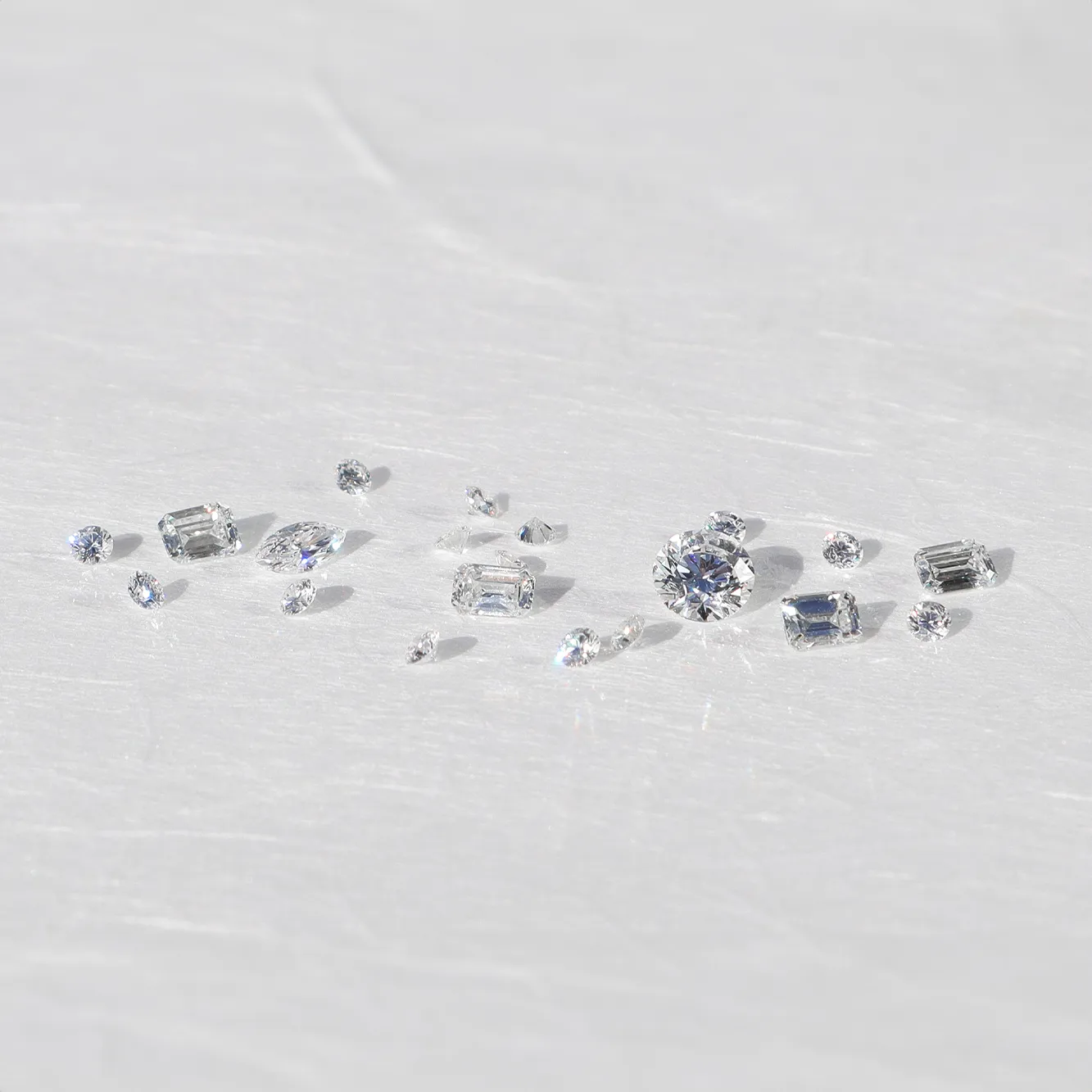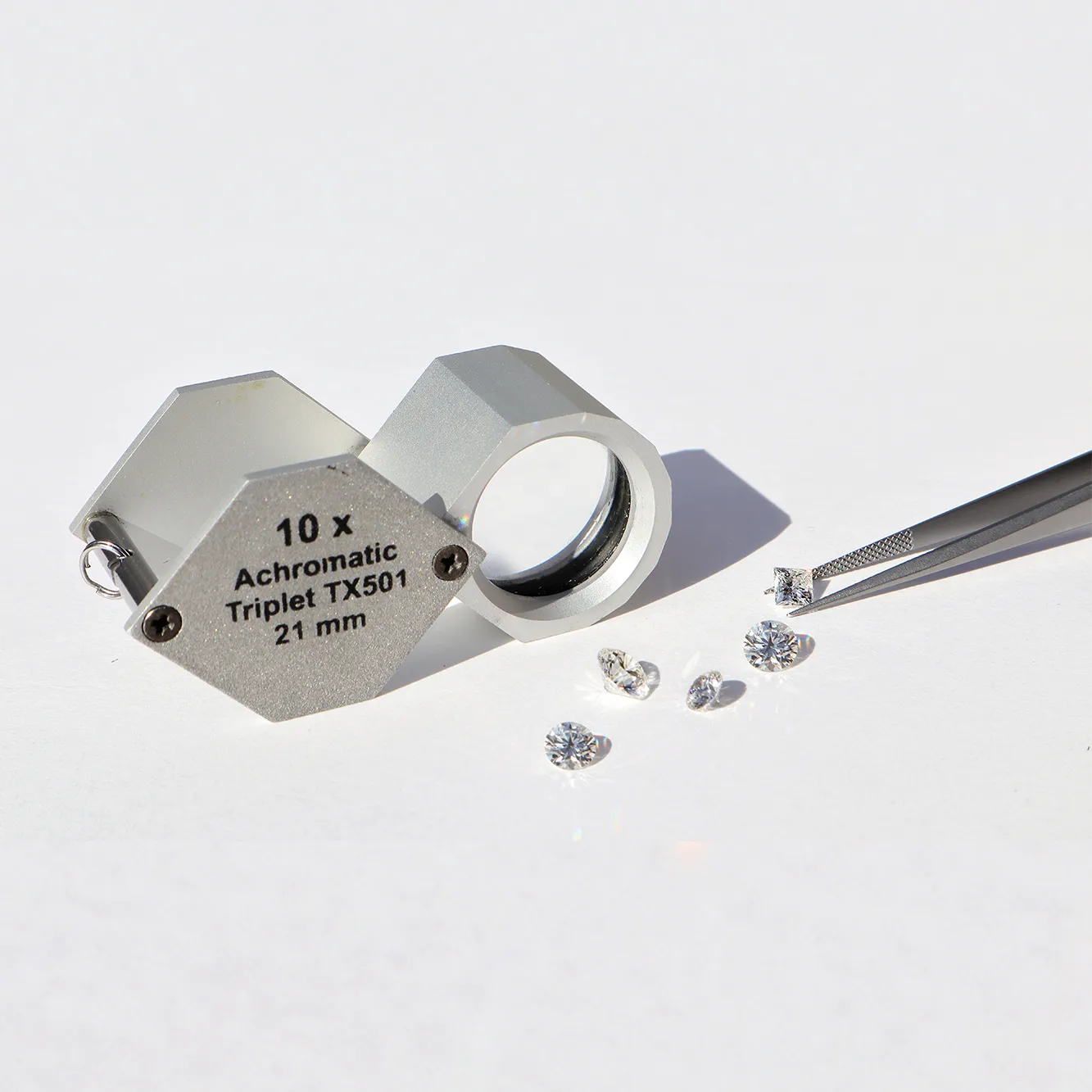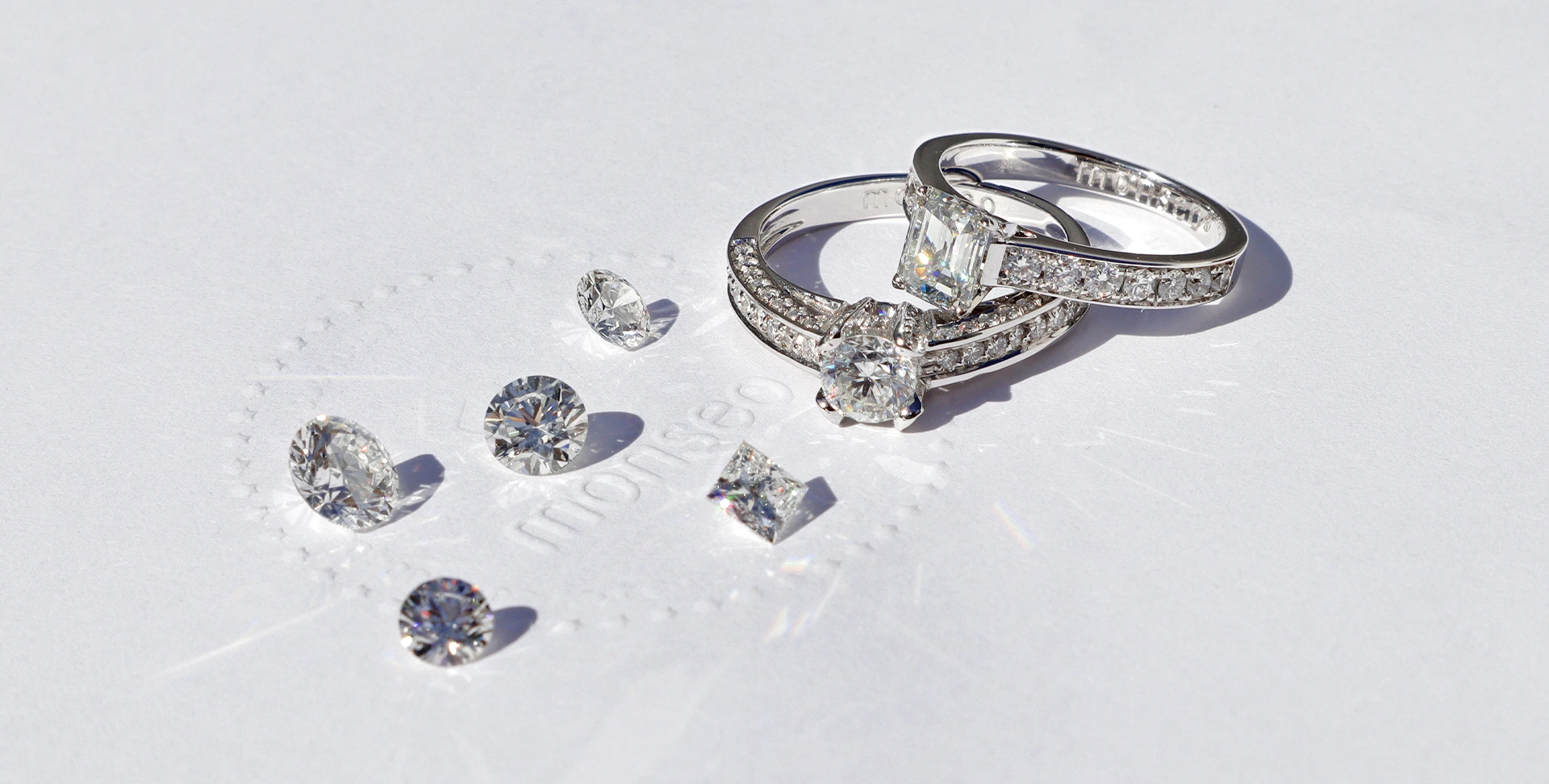

THE MOST COMPLETE HOW-TO GUIDE ON CHOOSING THE BEST DIAMONDS
Get to know the 4C'S

Understanding the complexity of diamonds can be challenging. Filled with complex terminology and choices, selecting a diamond involves more than aesthetics, it is also an investment. By reading this article, you will gain a clear understanding of nature's secrets, "seen through a magnifying glass" during the process of selecting and buying natural diamonds. You will understand the impact of their characteristics on value issues and learn how to make a more assertive decision.
At Monseo, the diamond is a genuine expression of passion, holding a unique fascination in each of our precious jewels. Below we’ll discuss polished natural diamonds, exploring their global classification. The International Diamond Council (IDC) was created in 1975 by the World Federation of Diamond Bourses (WFDB) and the International Diamond Manufacturers Association (IDMA) with the purpose of creating an international standard for rules, working methods and nomenclature. The IDC's main role is to ensure that all the diamonds around the world are graded and certified according to a standard that maintains their value and reputation. The IDC sets universal standards for diamond grading, guaranteeing quality and consistency in the global market. This promotes an ethical supply and trade of diamonds, tackling issues such as conflict diamonds to maintain the integrity of the sector. It also educates traders and consumers about diamonds, promoting a more informed and responsible diamond market.
With over 50 years of experience, at Monseo we have mastered the art of selecting polished natural diamonds with an experienced and resident gemologist dedicated to excellence in every detail. Each diamond that embellishes our creations is a promise of unrivalled quality and lasting beauty. Monseo also uses diamonds that are identified and graded by the most accredited institutes, such as the GIA, HRD, IGE following the rules of the International Diamond Council. When entering the world of diamonds, it is essential to understand the criteria used to value them, the famous 4 Cs: Carat, Colour, Clarity and Cut.
Carat
The unit of measurement used to determine the weight of diamonds and other precious stones is expressed in carats. One carat equals 0.2 grams. The carat is subdivided into 100 points. The abbreviation for carat is represented internationally by 'ct'.

Clarity
The clarity of the diamond indicates the absence or presence of inclusions in the diamond. The best quality is clarity under the magnifying glass, which means that it is free of inclusions when examined closely by an experienced observer with a 10x magnifying glass. If there are inclusions, solid or gaseous, we have to take into account factors that define the purity of an inclusion, such as size, contrast, position and number.
The different clarity degrees are:
a) Fl - Pure under 10x magnification.
b) VVS1 and VVS2 - Very, very small inclusions that are very difficult to find with a 10x magnifying glass. The size, position and number of internal inclusions determine the distinction between vvs1 and vvs2.
c) VS1 and VS2 - Very small internal inclusions, which are easily found with the 10x magnifier. The size, position and number of the internal inclusions determine the distinction between vs1 and vs2.
d) SI1 and SI2 - Small internal inclusions that are very easily found with the 10x magnifier.
e) P1 - Internal inclusions that are difficult to find with the naked eye from the crown side.
e) P2 - Internal inclusions are larger and more numerous. They can be easily found with the naked eye and slightly reduce the diamond's brightness.
f) P3 - Large and numerous internal inclusions very easily found with the naked eye, which greatly reduce the diamond's brightness.
Color
The diamond’s colour is a consequence of the colour centres, which are very small impurities in the crystal structure. Colour plays an important role in determining the value of a diamond. It ranges from colourless to yellow, brown, blue, pink, green, etc. There are practically diamonds of all colours. Most colourless cut diamonds belong to the "Cape" series, which have a colour ranging from colourless to yellow-green, from D to Z colours, with D being the best colour.
The colour grade is determined by comparison with "Masters Stones" or "standard stones". To determine other diamonds colours referred to as "Fancy Colours", the colour itself, saturation and hue are taken into account.

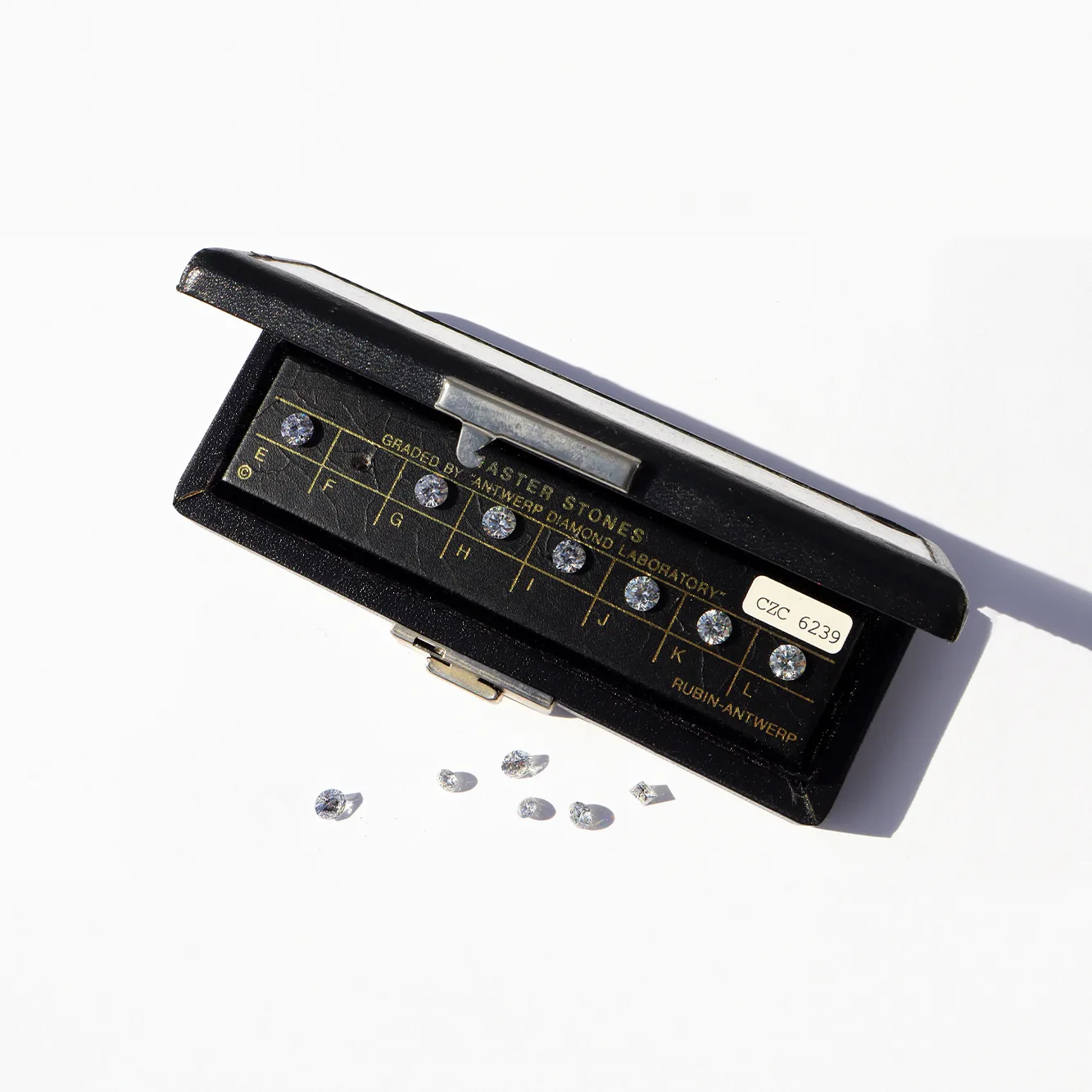
Cut
The cut refers to how a rough diamond has been shaped and polished, including the geometric shape, proportions, symmetry and the finishing quality. A good cut maximises the diamond's brightness, fire and sparkle, making it more visually appealing. Cutting is often considered the most important factor in determining a diamond's brightness. The degree of cut depends on a combination of factors and is determined by proportion, symmetry and polish. It can range from "Excellent" to "Poor".
1 - The proportions of a diamond determine the brightness and "fire" of the stone. Brightness depends on three proportions and two angles, i.e. how the size and angles relate to the different parts of the stone.
a) The proportion between the height of the crown and the diameter of the diamond (in a round diamond).
b) The ratio between the depth of the pavilion and the diameter of the diamond.
c) The ratio between the width of the table and the diameter of the diamond.
d) The angle of the crown.
e) The angle of the pavilion.
2 - Cutting symmetry measures how precisely a diamond's facets align and intersect. In other words, the deviation from strict symmetry between the various facets is measured. The diamond's finish will be determined by the presence of four main deviations: irregular circumference, variation in crown height or pavilion depth, off-centre table facet and off-centre vertex.
3- Polishing - this is where the final details of the veneer shapes are taken care of, as well as the exterior finish of the diamond.

Brilliant Cut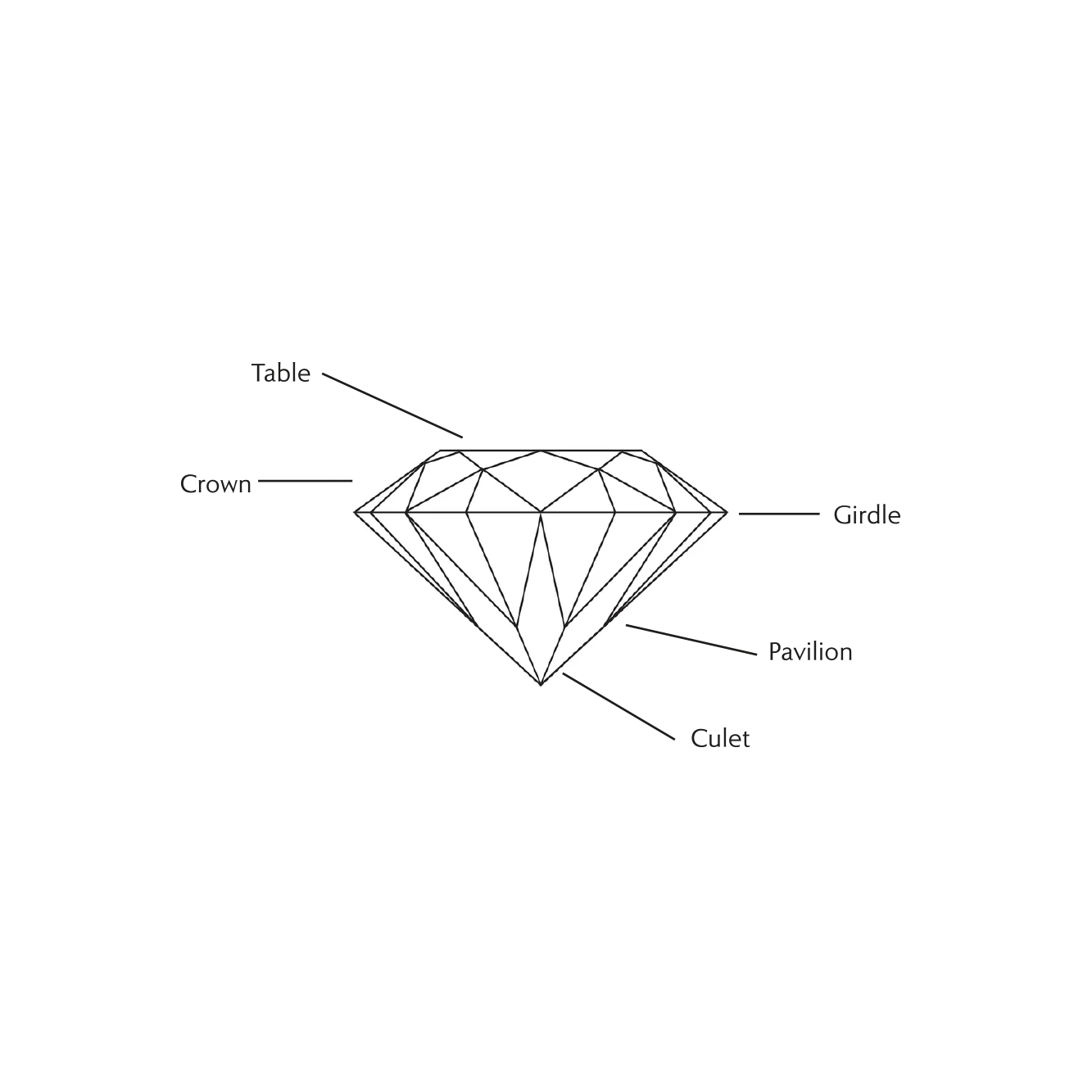
Taking the 4 C's together, diamonds are assessed and graded to determine their quality and therefore their market value. Each of these C's plays a crucial role in determining the price and overall aesthetics of the diamond. The choice of "the best" diamond can vary depending on personal preferences, the purpose of the diamond (for example, a diamond for an engagement ring versus a diamond for investment) and the budget available. It's important to take into account the different aspects of quality and decide which are most important to meet your specific needs and preferences. Ultimately, the choice of the best diamond will be unique to each person based on their individual criteria. Each diamond is unique and a promise of quality with timeless beauty. What's more, we are committed to providing complete transparency at every stage of the process.
From purchase to sale, we ensure that all data about the natural diamonds used in our collections is accurate and truthful. Our commitment to integrity ensures that every customer can fully trust the authenticity and quality of the diamonds they choose to mark their special moments.
Discover the selection of diamond rings accompanied by reports from the most accredited institutes HERE.
Check out the article by Monseo: Diamond: A Play of Light.
